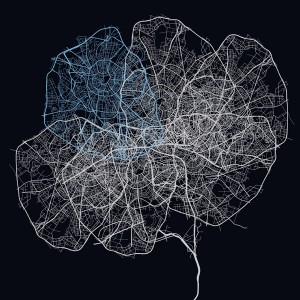Parametricism + Urbanism
Architecture and its styles have been ever changing through time, the basics of parametricism was first discovered in the 1990’s but however it had only come into effect with in the past several years with the advances in architecture and its parametric design systems. Parametricism has today become the new style architects use mostly in urbanism. This shift from modernism to parametricism was seen as a change from simple or orderly placing to complexity. It had evoked not only into the urban scale but also to smaller interior design concepts, from the understanding of the natural systems in nature to the application of these concepts into architecture.
Architecture and urbanism have been adapting to the needs of societal demands of the post-fordism era, through a continuous cycle of innovative adaptation. However, architecture is called upon to organize and articulate the increased complexity of post-fordist society. This parametricism is possible through a series of highly defined parametric design techniques, which are animation, simulation and form finding, parametric modeling and scripting. However these techniques have brought in more complexity and kinetics to the designs and concepts. The style and form keeps changing with the manipulation of a single element in the system.
Parametricism may seem like the perfect solution for urban design and city planning, but it can only exist with endless advancements in computational geometry. The techniques used for parametrics are nevertheless widely used and are in the stages of further development.
Regular variations of morphologies create a huge effect and help produce dominant urban effects and enables field alignment. Parametric Urbanism might include parametric rhythm, parametric figuration, and parametric sensitivity to realize its objective of rationality. Urbanism follows the concept of occupying and connecting. With parametricism it is able to simulate the settlement patterns and further understand the path networks.
Through parametrics one can understand how the change in a single element could affect the whole system and how these changes could be manipulated to further study their properties. Complex orders of chaotic patterns could be generated through this advanced technique of simulation.
The author uses the example of magnetic needle and polystyrene to explain the idea of urban landscape. The small pieces come together making up a complex urban settlement. In my opinion parametrics can best be applied into urban landscapes rather than interiors. As I believe when applied to urban scale it has a value and function to it, rather than when being applied to interior or small scale projects it is mostly for aesthetic purposes.
I am interested in understanding the pros and cons parametrics can bring about in the planning of a city, or how parametrics could affect the future of architecture. Could it lead or give way to a more self-sustainable or functional city rather than a city build for aesthetics purposes. In my opinion parametrics also helps to create a better navigation flow and build a socio economic infrastructure. However, I believe the advances in technology have made it possible to create infinite possibilities for architecture and urban planning through the digital simulation techniques.
Case Study: Yokohama Terminal FOA Architects / F. Moussavi, A. Zaera-Polo
Text: Parametricism – A New Global Style for Architecture and Urban Design - Patrik Schumacher, London 2008
Picture Source: http://www.brainpickings.org/index.php/2009/05/25/complexcity/

